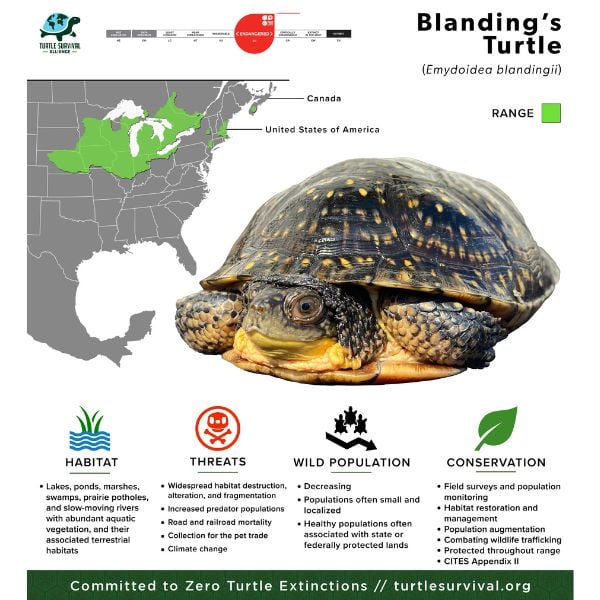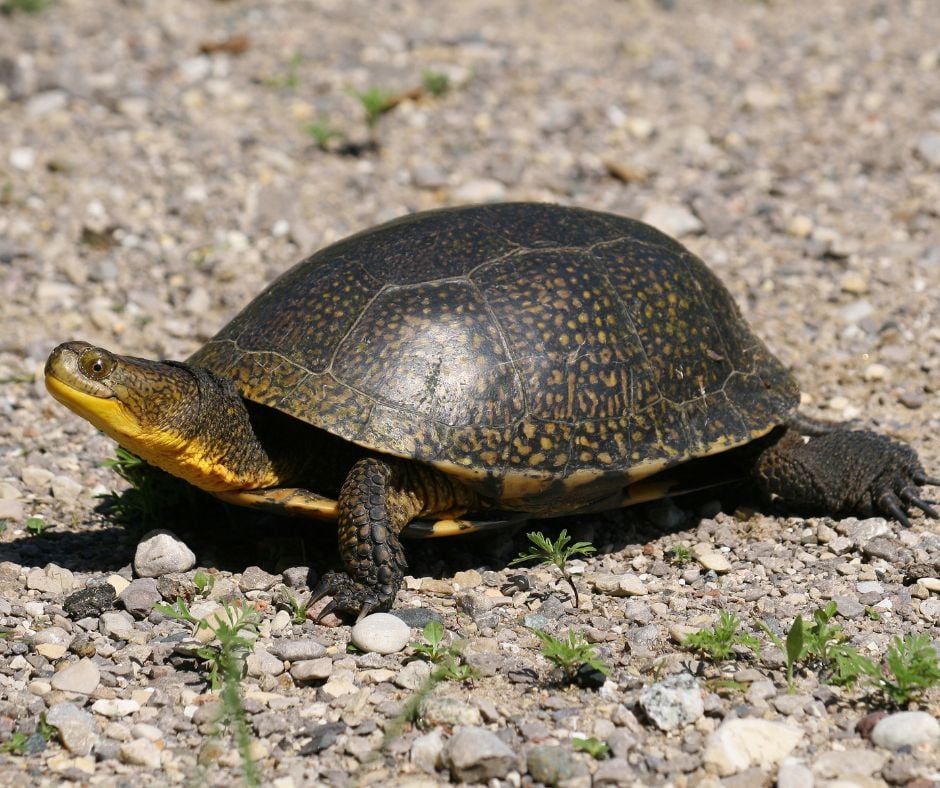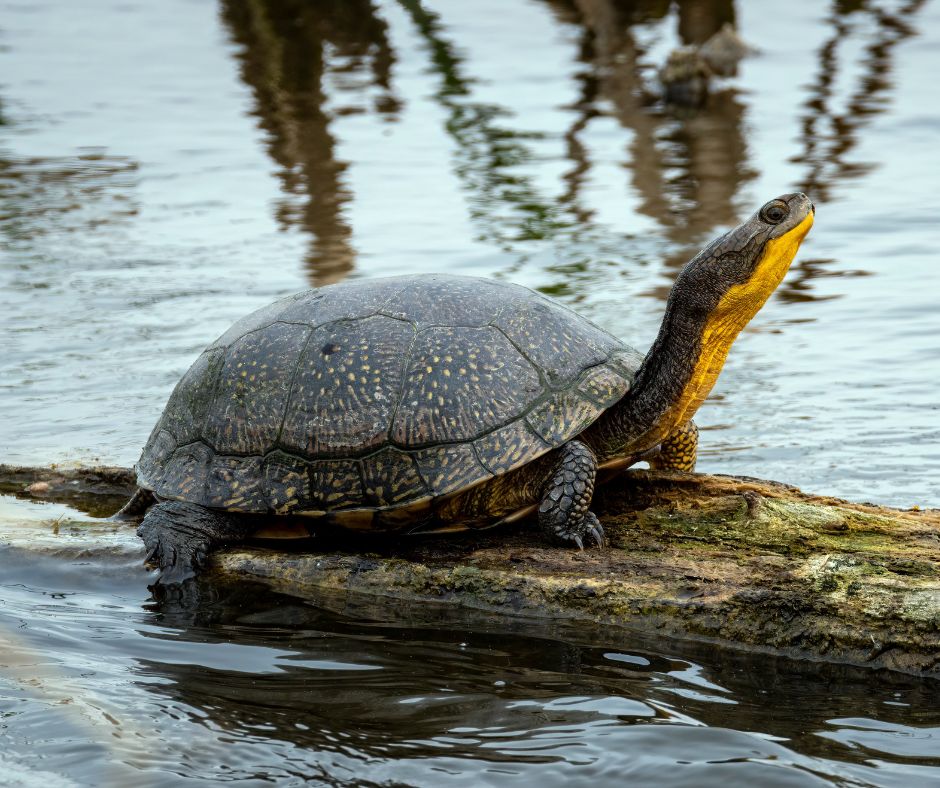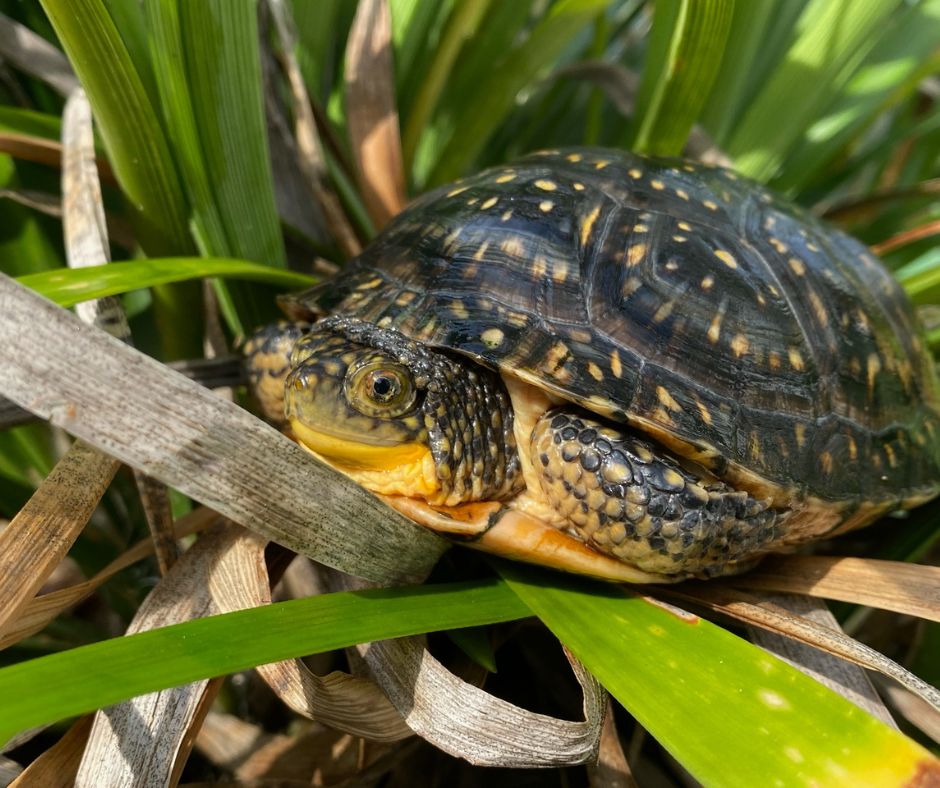The Blanding’s Turtle is a cold-hardy species found in the Upper Mississippi River basin and Great Lakes Region of the United States and Canada, as well as in disjunct populations in the Mid-Atlantic and New England regions of the United States and Nova Scotia in Maritime Canada. Although somewhat similar in appearance to the Spotted Turtle (Clemmys guttata), due to the yellow to yellowish-white speckles adorning the shell, the Blanding’s Turtle is much larger in adult size, growing up to nearly a foot in length, and is the only turtle in the United States and Canada that features in all members of the species an uninterrupted, conspicuous yellow throat and chin.
Across its range, the Blanding’s Turtle inhabits a myriad of wetland types, from prairie potholes in the central plains to quiet coves of the Great Lakes to small shrub swamps and cranberry bogs in New England. The species is adept at overland travel and will utilize various wetland types and their surrounding terrestrial habitats over the course of the year. Due to their extensive use of both aquatic and terrestrial environments, the Blanding’s Turtle requires sizeable contiguous or interconnected tracts of land to thrive. Because the majority of these environments have been highly fragmented, altered, or altogether destroyed, populations of the species are often now relatively small and localized, though some areas of abundance still occur.
In addition to habitat destruction, alteration, and fragmentation, the Blanding’s Turtle faces numerous other threats that lead to population decline. Road and railroad mortality is a persistent threat not only to females searching for nesting sites but also to males and other age classes of turtles who move between habitats. Increased levels of predators also pose a threat to adults, juveniles, and eggs, and illegal poaching removes adult turtles that are critical to population stability. In the early to mid-1900s, in the Great Lakes Region in particular, the Blanding’s Turtle was heavily harvested for commercial food markets.
The Blanding’s Turtle is now regarded by the International Union for the Conservation of Nature (IUCN) Red List as Endangered, and is protected in every United States state and Canadian province in which it naturally occurs, ranging in conservation status from a Species of Special Concern to Endangered.
To help Blanding’s Turtles, please never take one from the wild, pay careful attention to the road while driving in their range, especially during the summer, do not purchase illegally collected turtles, use best land management practices for wildlife, and report any sightings to your state or provincial herpetologist or wildlife resources department.




